Food
National Mango Day 2025: 5 Easy Desserts You Can Make at Home
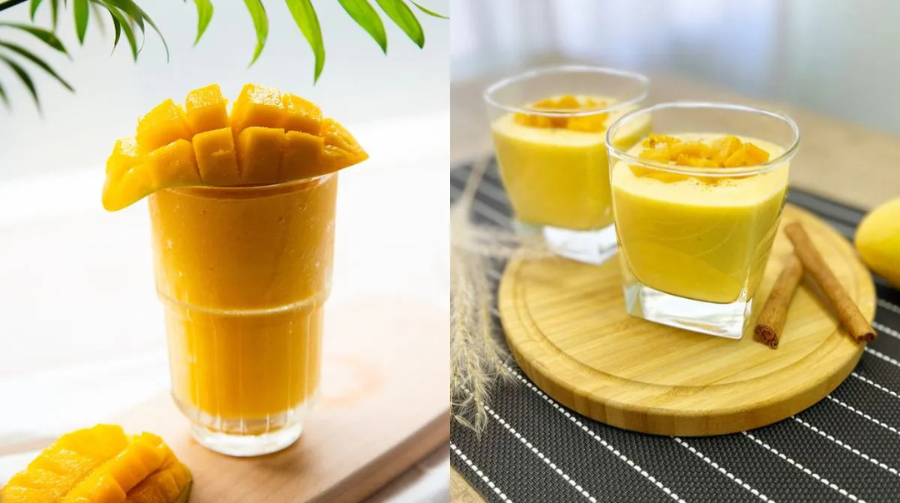
The mango is more than just a fruit—it’s a feeling. And every year on July 22, mango lovers unite to celebrate National Mango Day. From Alphonso to Kesar, Langra to Dasheri, India’s obsession with mangoes reaches its peak during this time.
Instead of simply slicing it or blending it into a juice, why not honor this king of fruits by turning it into easy, irresistible desserts you can make at home?
Here are 5 homemade mango dessert recipes that are quick, affordable, and guaranteed to impress family and friends. No professional chef skills required—just fresh mangoes, a blender, and a little love.
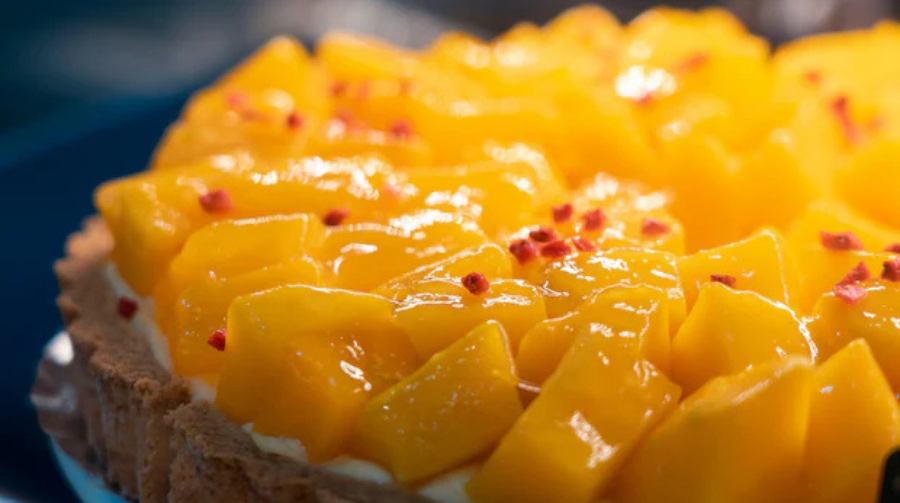
Mango Sorbet (With Cottage Cheese)
Perfect For: Protein-packed, guilt-free indulgence
Prep Time: 10 minutes + 30 mins chill
Serves: 2–3
Why You’ll Love It:
Inspired by viral TikTok & Sara Davies’ BBC Good Food remix, this 3‑ingredient mango sorbet is a dessert that also packs nutrition. The cottage cheese adds a creamy texture, without extra fat.
Ingredients:
- 1½ cups frozen mango chunks
- ½ cup cottage cheese
- 1–2 tsp honey or agave (optional)
- (Optional) 1 tbsp Greek yogurt or psyllium husk for extra creaminess
Instructions:
- Blend everything in a high-speed blender until creamy.
- Freeze for 20–30 minutes or eat immediately like soft serve.
- Top with chopped pistachios or mint for garnish.
Pro Tip: Freeze leftovers in popsicle molds for healthy mango pops!
Two‑Ingredient Mango Lemonade Sorbet
Perfect For: Hot summer afternoons or mango-lovers in a hurry
Prep Time: 5 minutes
Serves: 2
Why You’ll Love It:
No added sugar, no dairy—just frozen mango + lemonade equals a bright, refreshing sorbet in minutes. Great for kids too!
Ingredients:
- 2 cups frozen mango
- ½ cup chilled lemonade (fresh or store-bought)
Instructions:
- Blend until smooth, adding more lemonade if needed.
- Scoop and serve immediately or freeze for a firmer texture.
- Serve in chilled glasses with lemon zest on top.
Health Bonus: Packed with vitamins A, C and natural fiber.
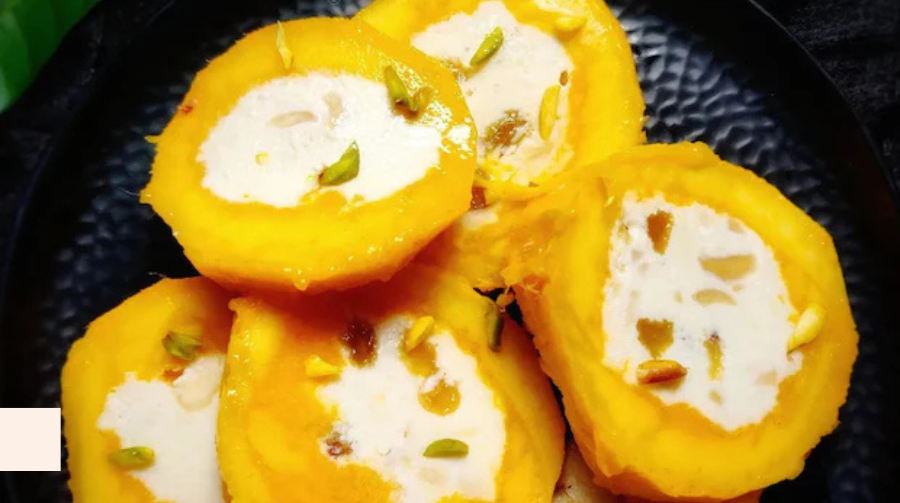
Mango Sticky Rice (Thai-Style)
Perfect For: Dinner parties or an elegant summer dessert
Prep Time: 15 minutes
Soak Time: 2 hours
Serves: 4
Why You’ll Love It:
This traditional Thai dessert is rich, tropical, and beautifully balanced—soft sticky rice soaked in sweet coconut cream, served with juicy mango.
Ingredients:
- 1 cup glutinous (sticky) rice
- ¾ cup coconut milk
- 3 tbsp sugar
- ¼ tsp salt
- 1–2 ripe mangoes, sliced
- (Optional) sesame seeds or mung beans for topping
Instructions:
- Soak sticky rice for 2 hours and steam until tender (~25 mins).
- Heat coconut milk with sugar and salt until dissolved (don’t boil).
- Pour over the warm rice and let it sit for 10 minutes to absorb.
- Serve with mango slices and drizzle extra coconut sauce.
Make-Ahead Friendly: Can be chilled and assembled before serving.
No-Bake Mango Float (Icebox Cake)
Perfect For: Chilled celebrations and lazy dessert days
Prep Time: 15 minutes
Chill Time: 3–4 hours or overnight
Serves: 6–8
Why You’ll Love It:
This Filipino-inspired dessert is a no-bake mango cake made by layering cream, condensed milk, and graham crackers—then topping with fresh mangoes.
Ingredients:
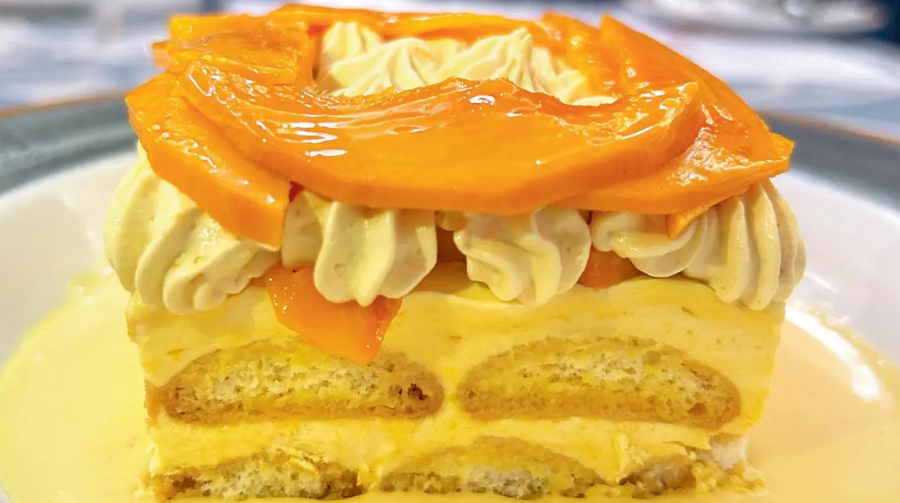
- 2 ripe mangoes (thinly sliced)
- 1 pack graham crackers or digestive biscuits
- 1 cup heavy cream
- ½ cup sweetened condensed milk
- (Optional) vanilla or lemon zest for aroma
Instructions:
- Whip cream until stiff peaks, fold in condensed milk.
- In a dish, layer graham crackers → cream mix → mango slices.
- Repeat layers and finish with mango slices on top.
- Chill 4+ hours or overnight until set.
Presentation Tip: Garnish with crushed biscuits, mint, or toasted coconut.
Aamras (Chilled Mango Puree Delight)
Perfect For: Traditional Indian summer nostalgia
Prep Time: 5 minutes
Serves: 2–3
Why You’ll Love It:
A staple in western India, Aamras is mango pulp blended with cardamom, milk, and a hint of sweetness. Enjoy with pooris or as a cold mango shot.
Ingredients:
- 2 ripe mangoes, peeled & chopped
- ¼ cup chilled milk or water
- 1–2 tsp sugar or jaggery (optional)
- A pinch of cardamom or saffron
Instructions:
- Blend all ingredients until silky smooth.
- Chill for 15–20 minutes before serving.
- Serve in bowls or short glasses, topped with crushed ice or nuts.
Variation: Add a splash of rose water for a floral lift.
Bonus Tips to Elevate Your Mango Desserts
- Choose the right mango: Alphonso, Kesar, or Badami work best for desserts.
- Freeze your mango chunks: Ideal for smoothies, floats, and sorbets.
- Pair with coconut or cardamom: They enhance mango’s natural sweetness.
- Add texture: Top desserts with nuts, chia seeds, biscuit crumbs, or toasted coconut.
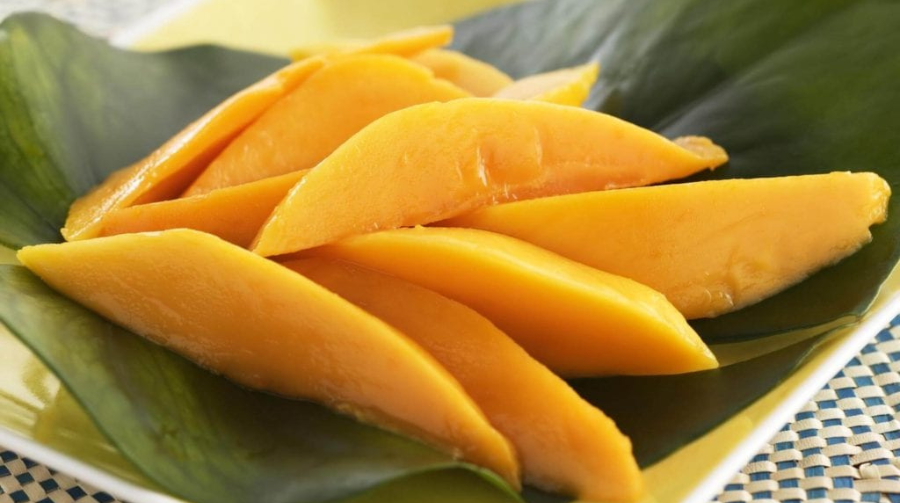
Serving Ideas for Mango Day
- Serve desserts in mason jars, clay pots, or kulhad cups for a rustic touch.
- Use cookie cutters to shape mango slices into hearts or stars for kids.
- Set up a “DIY mango dessert bar” with toppings like chocolate chips, syrup, and granola.
Why We Celebrate National Mango Day on July 22
India, the world’s largest mango producer, celebrates National Mango Day on July 22 to honor its cultural and culinary love for the fruit. From the Mughal courts to modern kitchens, mangoes have remained India’s most beloved fruit.
Whether eaten raw, juiced, pickled, or churned into desserts, the mango is a symbol of summer, celebration, and joy.
Food
Chia Seed Water vs Lemon Water: Which One Should You Start Your Day With?
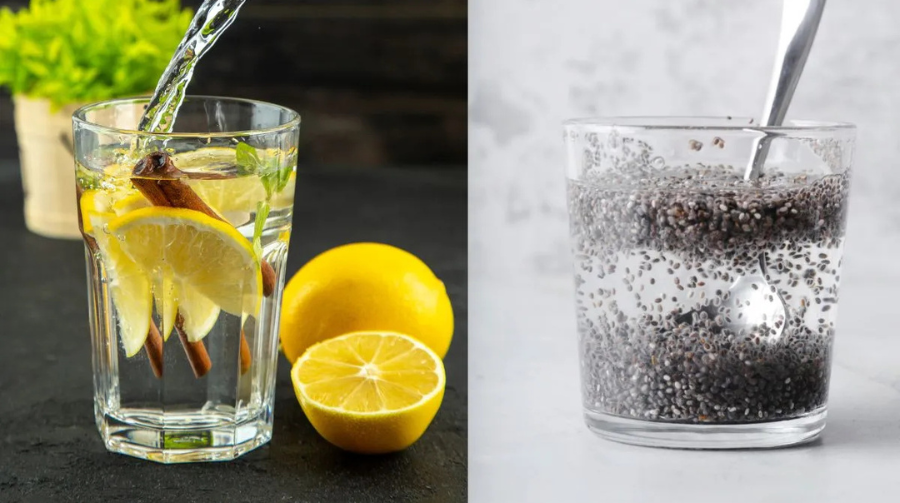
Why Compare These Drinks?
Chia seed water and lemon water are both trendy morning beverages touted for digestion, hydration, and wellness benefits. Here’s a deeper look at what each offers—and how they stack up.

Lemon Water: Simple & Effective
- Hydration + Vitamin C: Expert gastroenterologists highlight its ability to enhance hydration with added antioxidants, helping with skin health, iron absorption, and nerve function
- Gentle Digestive Support: Warm lemon water in the morning can gently stimulate digestion and saliva production, but detox claims often overpromise
- Low-Calorie & Refreshing: Ideal for replacing sugary drinks—pleasant to sip through the day, especially with mint or cucumber
- Mild Risks: Frequent consumption may erode tooth enamel; those with reflux should use a straw and limit intake
Chia Seed Water with Lemon: Fiber-Packed Superdrink
- Rich Fiber & Gut Health: One or two tablespoons of chia seeds offer about 5–10g of soluble fiber, forming a gel-like texture that promotes regular bowel movements and supports digestion
- Heart & Sugar Support: Omega‑3s, antioxidants, and fiber help regulate blood sugar, lower LDL cholesterol, and reduce inflammation
- Satiety & Weight Management: The combination of fiber, mild protein, and lemon enhances fullness, reducing cravings between meals
- Preparation Matters: Experts warn against dry-scooping—seeds must be soaked 15–30 min to expand; otherwise they may worsen constipation or cause gas
- Safety Notes: Start with small portions; those on blood thinners, with IBS, or swallowing issues should consult a professional
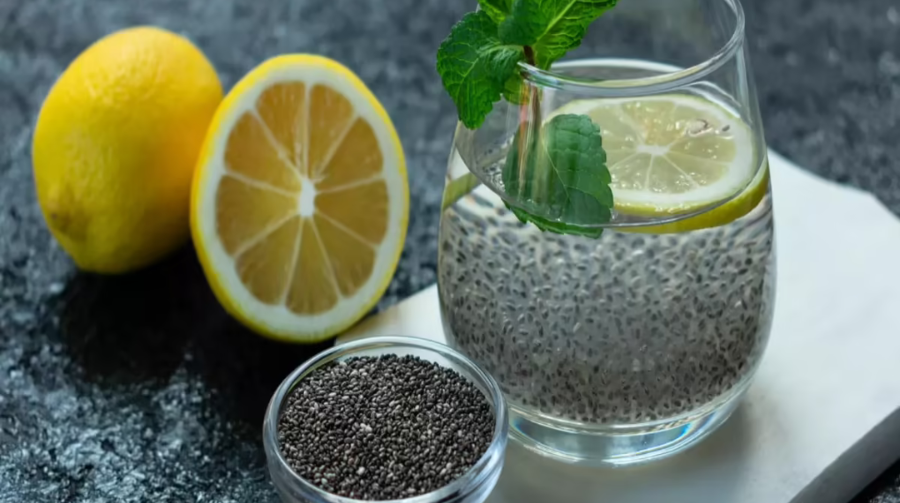
Side-by-Side Comparison
| Feature | Lemon Water | Chia Seed Water (+ Lemon) |
|---|---|---|
| Hydration | Excellent | Enhanced – chia retains water longer |
| Digestive Support | Mild, natural stimulation | Stronger – fiber-rich gel aids bowel movement |
| Satiety / Weight Aid | Low to moderate | High – fiber helps reduce hunger |
| Heart / Metabolic Benefits | Vitamin C, antioxidants | ALA omega‑3, antioxidants, blood sugar moderation |
| Ease of Use | Very quick and simple | Requires soaking time and proper prep |
| Potential Side Effects | Acidic for teeth, may bother reflux | Bloating, gas, obstruction if under-soaked or sudden |
| Ideal For | Hydration, immunity boost, sensitive stomach | Digestive health, weight control, fiber intake |

What Health Experts Say
- Gastroenterologists and dietitians recommend chia water only when properly prepared—soaking is critical to avoid digestive issues
- Dr. Will Bulsiewicz endorses the chia “internal shower” trend for relieving constipation when consumed safely
- Lemon water is praised for hydration and immune support—but should be consumed mindfully to minimize enamel erosion and acidity effects
So, Which One Should You Start Your Day With?
Choose Lemon Water if you:
- Seek gentle hydration, vitamin C, and an early digestive boost.
- Have a sensitive stomach or citrus-related reflux.
- Prefer low-maintenance, quick morning routines.
Opt for Chia Seed Water with Lemon if you:
- Are targeting fiber-boosted digestion, constipation relief, or blood sugar balance.
- Want greater satiety and support for weight management.
- Are mindful of proper preparation and can tolerate the texture.
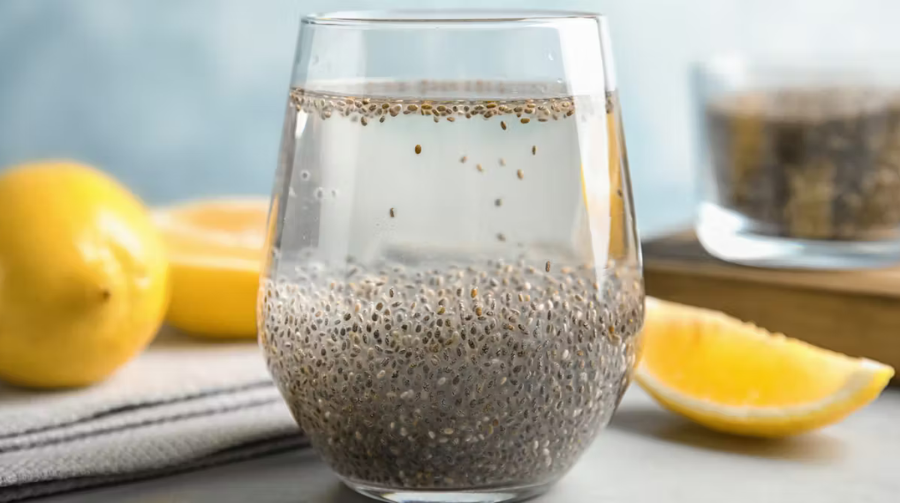
How to Prepare Chia Seed Lemon Water Safely
- Add 1–2 teaspoons (max 1 tablespoon) of chia seeds to 8–12 oz water.
- Let it soak 15–30 minutes to form a gel.
- Add juice from half a lemon, and stir.
- Drink on an empty stomach, followed with more plain water.
- Start slowly (half teaspoon), then increase if tolerated.
- Limit to 1–2 servings per day.
- Stay hydrated and consult your doctor if on medications or existing gut issues
Final Thoughts
Both lemon water and chia seed water offer unique benefits—but your best choice depends on your goals and tolerance:
- For hydration, immune support, and easy digestion, start with lemon water.
- To support fiber intake, regularity, and full-body nutrient absorption, chia water with lemon is ideal—but only if prepared mindfully.
Incorporate one—or both—into a broader healthy morning ritual that includes balanced meals, movement, and hydration for lasting energy and wellness.
Would you like a downloadable infographic, recipe video script, or social caption set for this topic?
Food
India Mocked Haldi Doodh, Now Buys It Back as ₹500 “Golden Milk” at Starbucks

What we once giggled over as grandma’s old-fashioned haldi doodh is now marketed in cafés as “golden milk”—often at 25 times the original cost. Indians scoffed, then splurged. Here’s the full story behind this cultural comeback.

The Reality Check—₹20 to ₹500
A Mumbai branding founder highlighted a jarring truth: traditional turmeric milk—available in many homes for around ₹20 a cup—is now presented by global wellness chains like Starbucks under the name “golden milk”, costing approximately ₹500. That’s a 25× markup on a beloved staple
Her point goes deeper: “If we ignore our own traditions, others will capitalize on them—and we’ll buy them back at premium prices,” she warned
Golden Milk’s Global Glow-Up—and the Appropriation Question
Worldwide, #goldenmilk has become a trend. Cafés in major cities promote it as a wellness elixir—complete with latte art and Instagram appeal—while detaching it from its roots in Indian home kitchens
This trend has raised growing concerns about cultural appropriation, where a native remedy is decontextualized, rebranded, and commodified—with little credit to its origin

What Makes Haldi Doodh Special?
Ancient Comfort, Modern Science
- Centuries-old remedy: In India, haldi doodh is a home remedy for everything from colds to sore joints, used across generations
- Proven wellness benefits: Turmeric’s active compound, curcumin, offers anti-inflammatory and antioxidant effects. And combined with black pepper, its absorption improves dramatically—a trick grandma instinctively knew
Yet, science-based wellness brands simplify—often using plant-based milk or powder mixes—stripping away cultural context and the integrity of the tradition
Why the Irony Stings
- Many Indians once regarded haldi doodh as outdated or “uncool.” Now they cheer for it once it’s foreign-labelled and sold at luxury prices
- This isn’t just about paying more—it’s about cultural amnesia: our roots being erased unless repackaged by the West
- Brands that launch turmeric-based wellness products often fail to credit the tradition, instead casting it as novelty rather than continuous heritage.
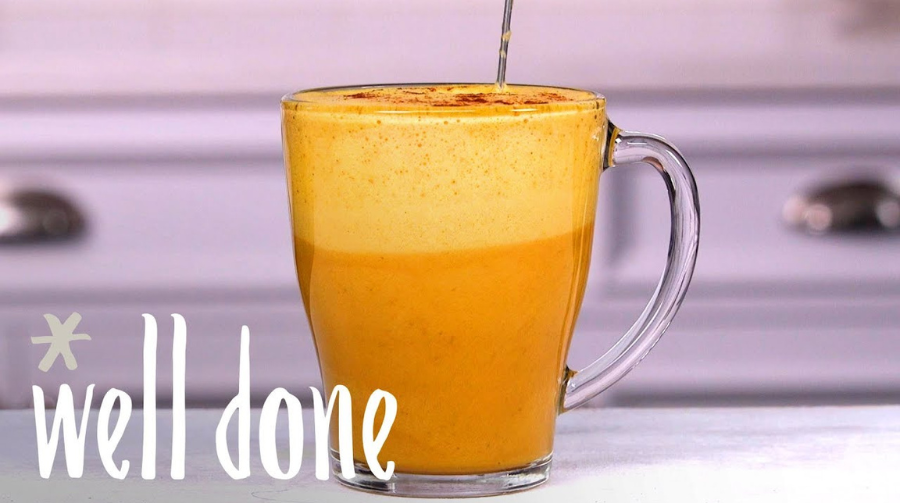
What We Can Do—Reclaim Now, Before It’s Too Late
- Celebrate “Haldi Doodh” by name
Simple acts—like asking cafés to serve it under its original name—help reclaim the narrative. - Educate and advocate
Share how this drink passed down through generations supported wellness long before it became Instagram-worthy. - Support local artisans and Ayurveda-based brands
Prioritize authentic desi businesses that honour the recipe, not just profit from it. - Intellectual and cultural awareness
Demand credit and even legal protection—just like traditional knowledge patents—to prevent overseas reposting without acknowledgement
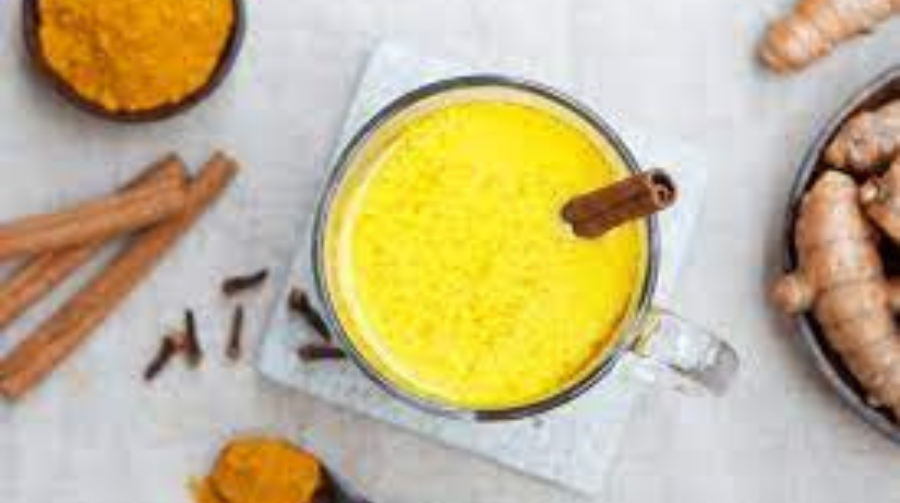
Final Sip—The Price of Disrespect
The ₹500 golden latte might feel indulgent today, but tomorrow? If we don’t speak up—and own our stories—next week’s ₹1,200 “ancient tonic” might already be marketed by someone else’s brand. As the Mumbai founder said: For decades we mocked the nuskhas… now we clap when they return with foreign branding.”
“If we don’t shape our own legacy… someone else will. Then our identity won’t feel like ours anymore.
Food
Are Dates Healthy for People with High Blood Sugar?
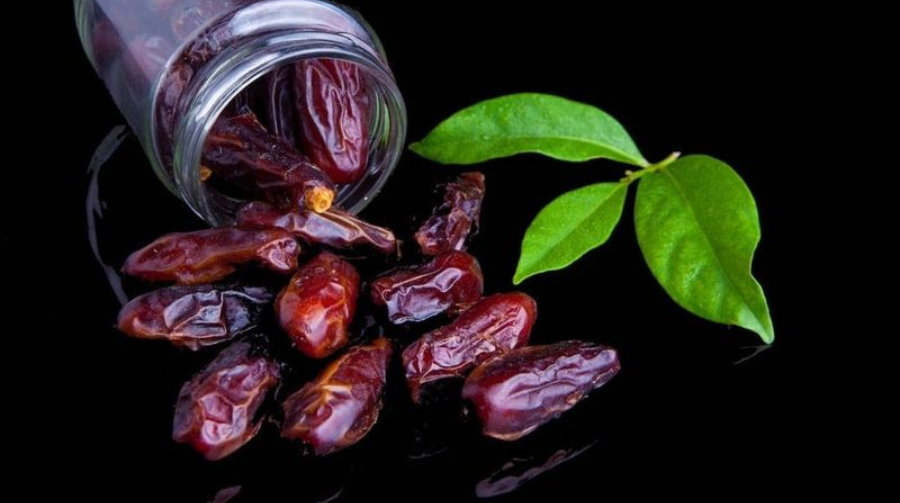
What Are Dates? Nutrient Powerhouses 🌴
Dates are the sweet fruit of the date palm. A 100 g serving delivers around 75% carbohydrates—mostly sugars (glucose, fructose)—along with 8 g of dietary fiber and essential micronutrients like potassium, magnesium, vitamin B6, and copper
Despite being high in natural sugar, they are also packed with antioxidants and anti-inflammatory compounds that support heart, brain, and digestive health
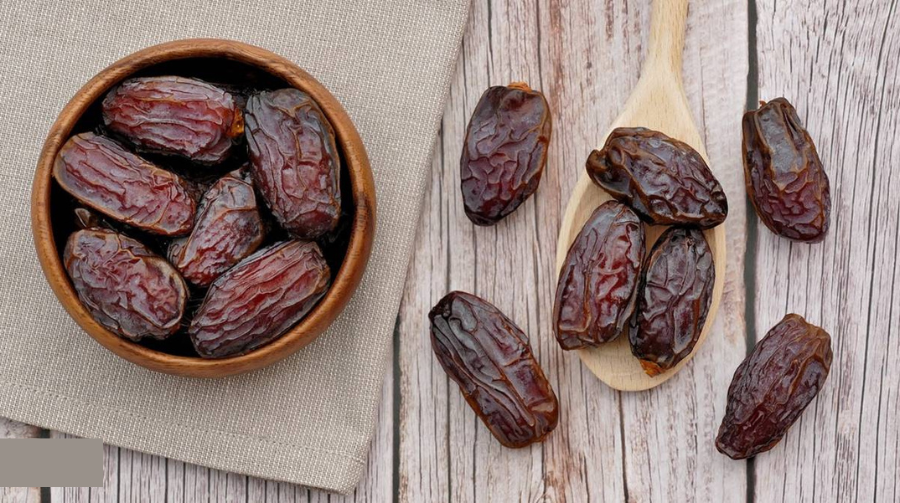
Glycemic Index & Glycemic Load: Why They Matter
- GI (Glycemic Index): Dates generally have a low-to-moderate GI—typically between 42 and 55 depending on variety and ripeness
- GL (Glycemic Load): A small serving—about 2–3 dates (~48 g)—has a medium GL (~17), meaning the impact on blood sugar is manageable in moderation
What Do Clinical Studies Say?
- A 12-week RCT comparing 60 g daily of dates vs raisins in people with Type 2 diabetes found no significant rise in HbA1c or fasting glucose. Cholesterol and inflammation markers also improved slightly in the dates group
- A meta-analysis found consistent reductions in fasting and postprandial plasma glucose with date consumption—though effects varied by variety and quantity. HbA1c was generally unchanged
- Cross-sectional studies from Saudi Arabia and Pakistan also suggest habitual moderate date intake is not linked to higher diabetes prevalence and may help stabilize glucose levels
Conclusion: Moderate date consumption—especially certain low‑GI varieties like Ajwa, Shaqra, and Sukkary—does not typically worsen blood sugar in individuals with Type‑2 diabetes, and may even offer mild metabolic benefits

Expert Recommendations: Portion Control & Pairing
- Limit to 2–3 dates per serving to avoid excess carbs (~36 g carbs, GL ~17–20)
- Pair with protein or healthy fat, like almonds or Greek yogurt, to slow glucose absorption and reduce spikes
- Choose low-GI types, such as Ajwa or Shaqra, which have a GL around 8–9 per three-fruit serving
- Time wisely: Morning or pre-workout is best for energy and metabolic support; avoid consuming them on an empty stomach or late at night when insulin response may be sluggish
Risks & Individual Variability
- Some individuals—especially with Type 1 diabetes or gestational diabetes—report steep blood sugar spikes even after a single date
- Continuous glucose monitoring shows wide responses—some experience minimal effect, others significant rise
- Side effects like gastric discomfort or constipation may occur if water intake and fiber balance are neglected

Practical Tips for Safe Enjoyment
- Start low: Try one date at a time, paired with protein or nuts, especially if you’re testing response.
- Track your own glucose (CGM or finger-stick) to see how your body responds.
- Drink water to aid digestion—dates are fiber-rich and may cause constipation if dehydrated
- Prefer whole, dried or fresh over blended date syrups, which may remove some fiber and increase sugar concentration
- Avoid pairing with high-GI carbs like bread or fruit juice to reduce compounding blood sugar impact.

-

 Celebrity Lifestyle6 months ago
Celebrity Lifestyle6 months agoEx-Cricketer Shikhar Dhawan Buys Ultra-Luxury Apartment Worth ₹69 Crore in Gurugram
-

 Glamour & Entertainment5 months ago
Glamour & Entertainment5 months agoTelegram Channels Disseminating Pro‑Russian Propaganda in Poland
-

 Crime & Investigation3 months ago
Crime & Investigation3 months agoDelhi Police SI Neetu Bisht Caught Taking ₹20 Lakh Bribe – Shocking Details Emerge in Corruption Probe
-

 Business5 months ago
Business5 months agoAmazon sets 30‑day relocation deadline for corporate staff—opt out by resigning in 60 days
-

 Celebrity Lifestyle5 months ago
Celebrity Lifestyle5 months agoMaha Kumbh Girl Monalisa seen in car allegedly worth ₹1 crore
-

 Entertainment5 months ago
Entertainment5 months agoAbhijeet & Dr Tarika Reunite in CID 2 — Fans Say ‘Clear the Misunderstanding Now
-

 Education5 months ago
Education5 months agoNEET UG Controversy Explained: Paper Leak, Impersonations & Ongoing Probe
-

 Bollywood3 months ago
Bollywood3 months agoNo ₹3 Lakh Fine or 2-Year Jail: The Truth Behind the ‘Hakla’ GIF Buzz




